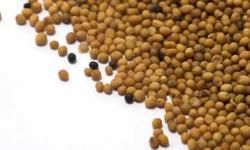Mustard contains a yellow dye called turmeric, which is usually the cause of mustard stains. Follow these stain removal tips to keep your household surfaces spot-free.
The first step in removing mustard stains is to identify the stained material.
Advertisement
Below are the most common types of materials that can become mustard-stained, with steps on how to remove mustard from each:
- Non-washable fibers such as Acetate, Burlap, Carpet (synthetic or wool), Fiberglass, Rayon, Silk, Triacetate or Wool
- Washable fibers such as Acrylic Fabric, Cotton, Linen, Modacrylic, Nylon, Olefin, Polyester or Spandex
- Hard surfaces such as Acrylic Plastic, Asphalt, Vinyl Clothing, Vinyl Tile or Vinyl Wallcovering
- Other hard surfaces such as Aluminum, Bamboo, Cane, Ceramic Glass/Tile, Cork, Glass, Linoleum, Paint (flat or gloss), Plexiglas, Polyurethane, Porcelain Dishes, Stainless Steel, Tin or Zinc
- Stone surfaces such as Bluestone, Brick, Concrete, Flagstone, Granite, Limestone, Masonry Tile, Sandstone, Slate or Terrazzo
- Grout
- Leather or Suede
- Silver
- Wallpaper
- Wood
Advertisement
